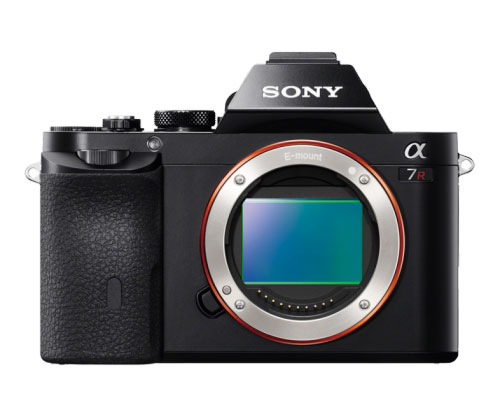
Stipulation
OK, I don’t want to start a fight, so as the lawyers say –let me stipulate the following…
–DxO has ratedthe sensor on theSony Alpha 7Ras the second highest rated sensor yet, just after theNikon D800e. Since the Sony’s rating is just 1 point less than Nikon’s, well within the range of statistical insignificance, and the camera it lives in is a smaller, lighter and less expensive body than the Nikon’s, we’ll let the statement stand. This simply tests out as the best sensor out there.
You might want to readthis articleto understand DxOMark’s sensor rating methodology.
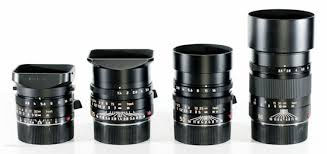
– No one likely needs to have the goodness of Leica’s M lenses explained. They have been the benchmark against which other lenses have been compared for three quarters of a century. No – all M lenses are not necessarily the best out there, but as a general rule there are few lenses at any given focal length and aperture that surpass Leica’s M lenses. So stipulated.
In any event, the following is neither a review of theSony A7r (B&H Link)– there are many of these already online – not a review of Leica M lenses – there are an almost infinite number of reviews and reports on these in print and on-line covering more than half a century.
Rather, this is just a report on how a specific set of seven lenses (the ones I own) work together with the new A7r.
The Marriage
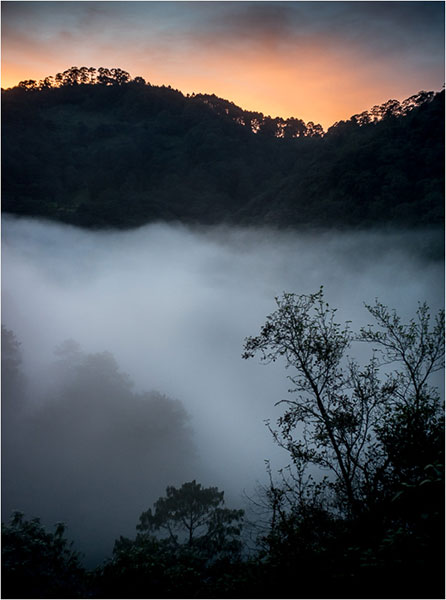
Sunset and Fog Bank. Sierra Gorda. Mexico. December, 2013
Sony A7r with 50mm Summilux. f/1.4 @ ISO 800
A natural question to ask, is, why would one want to put an Leica M lens on a A7r? After all, there are any number of Sony Alpha, NEX and other legacy lenses that can be used.
Parts of the reason is that while the A7r is a most appealing prospect, with a 36 MP Full Frame sensor in a small and light body, there are hardly any Sony FE lenses available yet . Certainly not enough for anyone to pick up an A7r and head out to do any kind of serious shooting. Of course Alpha full frame lenses can be used. There are many of them, and quite a few are very good. But, this means using an adaptor which adds bulk, and Alpha lenses are inherently large and heavy, as are all full frame 35mm reflex lenses. This is counter to what the new A7r and A7 are all about.
NEX “A” series lenses can also be used, this time without any adaptor needed. But, the 36MP A7r then becomes a 15MP camera. Not really what I, or most potential buyers had in mind.
In truth, Sony’s making available of the A7r without a reasonable slate of native full frame FE series lenses at the outset makes it difficult for anyone except those with a few really good legacy lenses to find the camera appealing. At least for now (late 2013).Really goodis the operative phrase, because this is arguably the world’s best 35mm format sensor.
But is it a Happy Marriage?
Not to stretch the analogy, but as with most marriages, the answer is –yes and no.
The Camera
Let’s start with the camera itself. As mentioned, I’m not going to do a full review, because these are a great many around on the web. In brief though, Sony has done an excellent job with the A7r, producing a full featured, full frame camera that is actually smaller than all APS-C cameras and, most surprisingly, almost all Micro Four Thirds cameras as well. The 36 MP sensor, without an AA filer (like the Nikon D800e) has resolution to burn and is a strong performer even in terms of dynamic range and high ISO.
The camera is designed on a form-follows-function basis. Unlike the also-newSony RX10, which to my eyes is actually handsome, the A7r is angular and functional. It handles well, has a front and rear control wheel, a top mode dial and a top mounted exposure compensation dial. All of these have appropriate feel and stiffness and none are likely to be incidentally set.
There are three buttons marked as Custom, but indeed five or six others, including rear wheel positions, can also be set as Custom functions. This is a remarkably customizable camera.
The EVF is Sony finest, offering very high resolution, fast refresh rate and a high-eye-point. EVFs are actually now starting to give reflex finders a run for their money, with only the best and the brightest of the latter (pun intended) being more pleasurable to use. The articulated rear LCD is similarly bright and sharp, and both can have their brightness adjusted for varying conditions.
The A7r uses Sony’s now standard FW50 battery and I found myself getting about 250 real-world exposure per charge. Once again though, Sony has cheaped out and does not include a stand-alone charger, rather reply on in-camera charging. When will they learn?
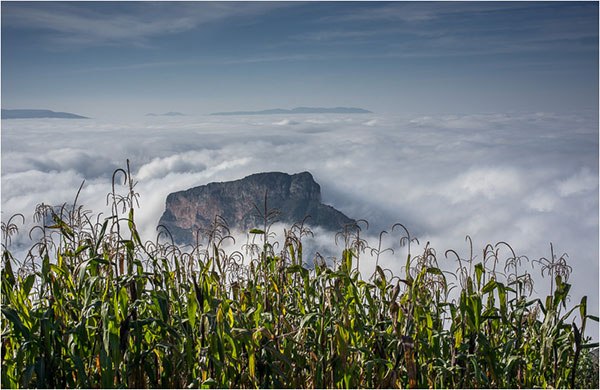
Portal de la Luna (Gateway to the Moon), Sierra Gorda. Mexico. December, 2013
Sony A7r with Tri-Elmar @ 50mm. ISO 125
The SD card slot is on the rear palm side of the camera, rather than the base with the battery – a much better design than the usual small camera all-in-one compartment which requires taking the camera off the tripod or mounting plate to change cards.
Altogether a very sweet camera, and one that Sony should be proud of. Canon and Nikon look like they’ve been left at the gate, with Sony now running a race almost all of their own. Recent Sony cameras have been innovative. Canon in particular just seems to churn out minor revisions to cameras that have been around for ages. The only companies who are pushing the envelope in any way comparable to Sony are Olympus and FujiFilm.
One area where Sony has made great strides recently is in user interface. The NEX interface was a complete dog, but happily that is now behind us. Sony has taken the Tri-Navi wheel design of the NEX-7 though and adapted it to the A7r, and that’s a good thing. The screen-based interface is an evolution of that from their Alpha servies cameras and nicely done. An Fn button which calls up a window allowing changes to most menu based items. For most people, once the camera is set to their liking, only card formatting will require a trip to the menu.
Regrettably, all is not perfect in Sony A7r land. Turn on is on the slow side, and this is especially so when the camera is coming out of sleep mode. I missed quite a few shots because of the latter, and found myself getting in the habit of turning the camera off between shots simply because auto-wake-up takes so long.
Sony has added Zebras to all of its new cameras. These come from the video world and are far superior to the usual blinkies for over-exposed areas. These can be set to show peak exposure levels at 5% increments from 70% to 100%+. For most photographers setting at 100% will mean than when the stripes appear in part of the image you can dial back the exposure compensation dial to avoid blow-out. Or, a portrait photographer, for example, might set them to 70% or 75% to see when skin tones are getting too light. A blown background is irrelevant in that situation. Once again, Sony should be congratulated for innovating truly useful features.
The second very useful feature, especially when using manual focus lenses, is Focus Peaking. This puts a coloured outline around the edges within an image that are most in focus. They can be set to one of three different colours, Red, Yellow or White, and three different intensity levels, plus Off. In addition the camera can be set to magnify the image to two different levels of magnification for critical focus setting. As will be seen, the combination of Peaking and magnification make working with legacy manual focus lenses a pleasure, if not breeze.

Dogs go Better with Coke. Bernal, Mexico. December, 2013
Sony A7r with Tri-Elmar @ 50mm. ISO 125
The Lenses
I own, and used for testing with the Sony A7r, seven Leica M lenses. These are the …
– 24mm Summilux-M f/1.4 ASPH
– 16-18-21mm f/4 Tri-Elmar-M f/4 ASPH
– 28-35-50mm f/4 Tri Elmar ASPH
– 35mm f/1.4 Summilux-M ASPH
– 50mm f/1.4 Summilux-M ASPH
– 90mm f/2 APO APO-Summicrom-M
– 135mm f/3.4 APO-Telyt-M
As I’ve written before, cameras in the digital era come and go, but great lenses are forever. My lens collection goes back when I shot with film-based Leica M cameras and continued through to the Leica M8 and M9. You’ll find reviews of numerous Leica cameras on these pages by using our review index pages and search function.
But when the so-called M10 (actually named the M-240) and now simply known as the Leica M (go figure), came along I decided that the rangefinder Leica gestalt had run its course. It least for me. I have used and for many years as a photojournalist made a living with every M Leica film camera since the 1960’s; from the M2, M3, M4, M6 and M7, and then the digital M8 and M9. I skipped the M5, as did many at the time. Even Leica makes the occasional dog.
I mention this because using a rangefinder camera is hard-wired into my visual cortex and eye/hand coordination. But, I no longer enjoy it or find it particularly useful. The M now has an accessory EVF (which adds considerably to its bulk) and of course an LCD, but once one starts using these what happens to the Leica ethos? For me, it is no longer there.
Because I decided to pass on the M10 I found myself using my Leica lenses on various current cameras from other manufacturers, especially the new Olympus OM-D E-M1, of which I am particularly fond. But MFT camera have a 2X magnification factor over full frame, and so even wide Leica lenses end up not being wide enough.
But now, with the full-frame A7r these lenses can be used to their full potential. Or can they?

Canyon. Sierra Gorda, Mexico. December, 2013
Sony A7r with 24mm Summilux. ISO 400
In Use
I’m not going to show you a hundred different corner magnifications and variations at various apertures. Not my style. What I will do is tell you what I see, especially that which is relevant in real-world photography rather than the alternate pixel-peeping universe.
I used aNovaflexadaptor to mount the lenses. This sells for about $260. There are much less expensive adaptors available, but I see litle point in putting a precision $4,000 lens on a $2,300 camera with a $20 adaptor.
Simply put, at focal lengths of 35mm and longer there is absolutely no issue using any of my M lenses on the A7r. Image quality is superb; about as good as one could wish. Curiously, I did notice a bit of chromatic aberration upon 100% viewing of some images, and a bit of purple fringing around extreme highlights. This, even with the two APO lenses, which in theory at least should not display any such effects. But, this is a theoretical rather than practical issue because the CA and fringing tool in Lightroom make short work of these minor blemishes. Remember, as the Japanese saying goes –perfection is reserved for the gods.
On lenses of 28mm or wider, specifically the 28mm setting on the Tri-Elmar, and all focal lengths on the Wide Tri-Elmar as well as the 24mm Summilux, there is vignetting and purple/magenta lens cast. The vignetting can be easily fixed with the lens vignetting tool in Lightroom, but the lens cast is another matter. Below I describe a tool to fix this, how to use it, and what its limitations are.
It’s worth mentioning that wide lenses designed for rangefinder M bodies all display some vignetting and vignetting and purple/magenta lens cast on non-Leica digital bodies. Leica dances though a number of different hoops to avoid this problem with its own digital bodies, which third party body makers either can’t or won’t. But that doesn’t mean that you can’t correct them yourself. It just requires a special tool.
There are also instances where, because of the extreme oblique angle of the light rays from the back of very wide angle lenses to the sensor’s corner photo sites, some lack of definition is possible, and seen. This varies by lens of course and also by aperture and subject distance. Not easy to pin down. But my feeling and experience is that this is not a serious impediment to most typical shooting situations. I wouldn’t use such a combination for critical architectural work, but otherwise it isn’t a big concern for me.
Using Lens Cast Correction
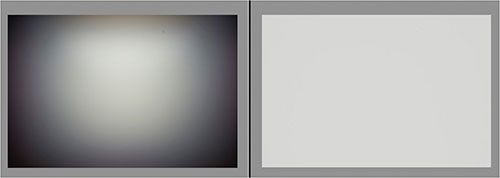
Example of an uncorrected a Flat Field Corrected Calibration Image
There is a tool available from Adobe Labs calledThe Adobe DNG Flat Field Plug-In. It works with both Lightroom and the Camera Raw section of Photoshop. It is a free download and easy to use.
Here’s how it works. You take the photograph in raw, just as you normally would. You must start with a raw file. An out-of-camera JPG will not work. Then in Lightroom or CR, you export the file in DNG format and then re-Import it. You now have your original raw and a DNG. Simple and quick.
Next you have to apply a so-called flat field or lens cast correction adjustment file to the DNG. How do you do this? Well, there are two ways.

Example of an uncorrected and corrected image shot at the 28mm setting of the Tri-Elmar.
Additional adjustments have also been made to the final file, seen on left above.
What you need to do is shoot a second raw file using the same camera, lens and aperture as your photograph, but through a translucent piece of plastic. The exposure needs to be very bright. Just below clipping, which usually means about 2-3 stops brighter than average. Your camera’s “blinkies” will guide you here.
This shot can either be taken at the same time as when you shoot your original, or you can shoot and build a library of such files just once, and then apply whenever they are needed.
So, for example, if you have the 24mm Summilux, just shoot a series of exposures t hrough the plastic, one at each F stop, and then after loading them into Lightroom or CR, export them as raw files to a separate directory on your hard drive. Now, whenever you have a shot taken with the 24mm Lux, you simply convert it to DNG, then apply the appropriate correction file with…
Library / Plug In Files / DNG Flat Field
Something to note is that this works best with shots taken at low to moderate ISO. High ISO images do not correct that well. The reason for this is that if there is strong vignetting in the corners, and the main part of the image is already at a high ISO, the corners may become noisy.
You should also be aware that if you are using External Correction instead of what Adobe calls Interleaved Correction (where the calibration file is shot sequentially with the image file), then you’ll need to make a note somehow of the particular lens and aperture used for each shot. It’s a pain, but usually you’ll remember.
Incidentally, there is a similar tool built intoCapture One, which works just about the same way.
With either of these tools there is no reason not to consider using wide-angle M lenses lenses on a Sony A7r. I can not tell you if any lens other than the ones that I have tested will work as well, but most should.
Vs. the Leica M240
No report such as this would be honest if it didn’t include mention of the elephant in the room, theLeica M240 (B&H Link). This is Leica’s flagship M digital camera, and is priced at US $6,950. This is, of course, the camera that Leica M lenses are designed to work best with. Indeed, it’s more the other way round, with the M240’s sensor specifically designed to match the characteristics of heritage and current Leica M lenses.
No other camera, not the Sony A7r or any other has a sensor design that is a capable of dealing with M lens issues as does the M240. But, as we’ve seen above, this does not rule out using M lenses very effectively on other cameras.
The issue for Leica lens owners comes down to whether they still want and need the rangefinder ethos or not. Yes, the M240 is a very nice cameras, but the Sony has a better all-around sensor and is a more flexible camera. Oh yes, did I mention that it’s four and a half thousand cheaper than the M240?
So, as with everything in life one must make decisions, and must do so as often as not with imperfect information. Good luck.
Conclusion
As you no doubt have heard and read elsewhere the Sony A7r is a pretty terrific camera. It’s Achilles Heel at the moment is the lack of native full frame FE lenses. I would not suggest that anyone rush out to fill the void with Leica M lenses. They are fantastic, but expensive, and many even hard to get. You also give up auto-exposure and auto-focus.
But if you own some Leica M or third party M mount lenses, and have an eye on Sony’s latestuber-camera, then I think that you’ll find they make a remarkable combination, so long as with wide angle lenses, at least, you’re willing to make an effort to get the most from them.
UPDATE – Dec 22, 2013
During the past few days there have been reports that the A7r is subject to serious shutter vibration problems, seen at certain shutter speeds and with longer focal length lenses. I have now read enough reports, a couple by quite authoritative sources, that I believe them to be accurate.
I did not encounter these issues during my own testing with Leica M lenses because these were all of relatively short focal length.
While there is bound to be a certain amount of babble about this on the forums, I think that potential purchasers should investigate these reports for themselves and watch for news about any possible fix or update comments by Sony.
Michael Reichmann
December, 2013
You May Also Enjoy...
Got a Question? Ask SMP
Got a Question? Ask SMPI get questions every week, ranging from the sublime to the ridiculous. I thought it might be fun to answer some
Rigues
RoguesNaturally, I suppose, a whole bunch of people let me have it last week for my apparent endorsement of a particular brand of camera, and
